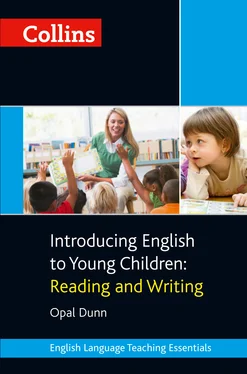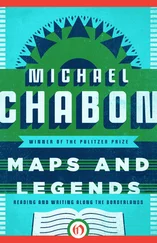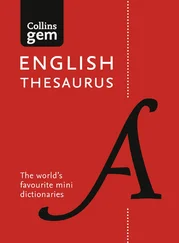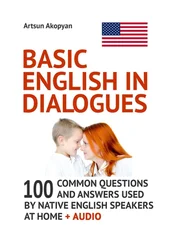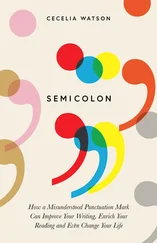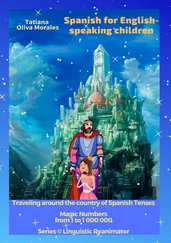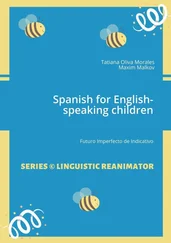By the age of 6, young children are familiar with most of the structures of their L1, although they are still absorbing new words and phrases. During pre-school children may have been introduced to different forms of spoken English or they may start an English programme during the first years of lower primary school. In all cases they innately expect to reuse their language-learning strategies to absorb spoken English through listening to it, as they take part in meaningful, playful activities. To young children learning language is not a task – it is not instructed, even if it is adult led. Young children have not yet developed the cognitive maturity to understand and use English taught as an abstract, grammar-based subject. Most of them cannot yet recognise the difference between a verb and a noun in their L1!
1.2 Transitions
Teaching methods in the first years of compulsory schooling depend on local society and cultural expectations. Parents and extended families often have culturally influenced opinions about how and when children should learn another language – in this case English.
Transitions (by which we mean the changes incurred by moving between schooling levels throughout compulsory education) alter the child’s administrative status as a student. Transition is based on the child’s date of birth rather than his or her level of maturity and readiness for change in methodological approach. There are few examples of free-flow schooling, where status and individual development are coordinated, making transition smoother for the child.
Transition from one school level to another generally entails an immediate adjustment to a more abstract style of learning, with teacher-led instruction and new expectations – even though there may be no change in the child’s cognitive maturity, which continues to develop at its own rate following well-researched milestones.
The challenges in transitioning from home to pre-school are not likely to be great due to the close collaboration between family and pre-school staff. Both use similar supportive language patterns which are understood and expected by a young child. There is, however, in many societies, often a more marked difference between educational methods used in pre-school and those used in primary school (the first year of more formal compulsory education). This change is felt, if not verbalised, by the child in:
teacher–child relationships
types and use of language
types of teacher instruction.
There is a new distance between the teacher and child, which young children feel. Gone are the many opportunities for caring, intimate, one-to-one dialogues with the teacher.
Although there may be a change in teaching style when a child enters primary school, teachers still have to focus on increasing the level of spoken English in preparation for the introduction of formal literacy, reading, spelling and writing. To do this successfully, teachers need to continue planning enabling activities in which children can use their existing language-learning strategies. Without these opportunities children find it difficult to pick up language to their full potential.
Parents virtualise start of normal school by uniform and a school bag. Play is seen as recreation and children are not sent to school to play .
(Stewart)
Transition to compulsory schooling is ritualised within many societies through material possessions like a uniform and a school bag, as well as in daily language within the extended family. Family discussions and expectations have changed to match the entry into formal schooling. Family members might say You are going to big school now. Listen to what the teacher says. Put your hand up if you want to ask a question .
Parents’ comments about their young child’s changed status are often influenced by their own school experience. Some parents support their children through transition by talking about their new English experiences with them in L1. Parents’ understanding and mediation during transition to compulsory schooling is important as parents know, intimately, how their child learns as they have shepherded their language development since birth.
1.3 Play as a form of learning
Play is the highest form of learning and helps children to apply what they learn in an integrated way .
(Bruce)
Incorporating opportunities for play within new activities helps children become more confident, as well as leading them to become more divergent, reflective, inventive and persistent thinkers.
As the teacher’s role is to provide a selection of enabling opportunities in which to acquire English, the atmosphere and teaching style in English lessons may be different from content-based lessons like Maths or Science. Some parents feel that since their children are now in compulsory education with a timetable divided into major subjects, instruction should now be more formal and should begin to resemble secondary school methods. Their reaction when their child refers to ‘playing’ in the English lesson can be of annoyance and they may openly criticise the teacher for not ‘teaching’, saying something like I did not send my child to primary school to play! Play is for break time. I expect my child to learn English .
‘Play’ is an umbrella term. In English the word play is broad and the meaning can be confusing. It can be used to talk about participating in a wide range of activities:
play football (fixed rules and expectations)
play time (free choice recreation at pre-school and primary school)
play ‘Snakes and Ladders’ or ‘Grandmother’s Footsteps’ (culture-based children’s games with a set of known rules)
play the piano (the formalised learning of a musical instrument, following music rules)
play on a games console / tablet / smartphone
The concept of play and its role in childhood differs from culture to culture; it can also differ between boys and girls. In some societies individual play is not valued as a way of learning, so some young children may not have developed skills to play by themselves and may wait for instructions from parents, teachers or other adults.
In a child’s mind, the physical activity of play is like adults’ work – children are intrinsically motivated to physically try out things, to find out how they work. However; to adults play can be seen as frivolous since it has no obvious aim, and in some cases has no adult presence.
Play is learning through doing: taking part in shared activities with a supportive adult or older child whose language the child can absorb unconsciously. A division between play and work only exists in the minds of adults who think in terms of formal teaching and instruction. For young children the two are blurred until the age of 5 or 6, when children begin to become aware of actually ‘learning’. Any distinction made by children might arise from external symbols of a formal approach (such as sitting at a desk or using a textbook) but not from the content of an activity. Even if the content is more formal (such as a spelling test), playful use of voice and language by the teacher can make children feel that the experience is fun and they may even describe it to others as playing a game.
The main characteristic of play — whether of child or adult — is not its content but its mode. Play is an approach to action, not a form of activity .
(Bruner in Moyles)
A skilled teacher, like a young child’s mother, regularly turns routine activities into what children think of as play, simply by using playful language. Furthermore, the playful nature of many language-learning activities is accentuated when contrasted with the more formal teacher-led instruction of other school subjects. This approach may account for the popularity of English teachers in primary schools.
Читать дальше
